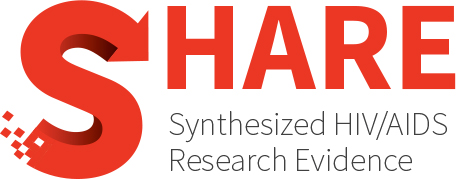Category Archives: Governance arrangements
How decisions about care are made
A systematic review of linkage-to-care and antiretroviral initiation implementation strategies in low- and middle-income countries across sub-Saharan Africa
Linkage to care (LTC) and initiation of antiretroviral therapy (ART) are key components in the longitudinal care cascade for people living with HIV. Many strategies to optimize these stages of...
Vaginal ring acceptability: A systematic review and meta-analysis of vaginal ring experiences from around the world
OBJECTIVE: The vaginal ring (ring) is a female-initiated, long-acting drug delivery system for different indications, including HIV prevention. Our aim was to provide evidence for acceptability of the vaginal ring...
Care of sexual and gender minorities in the emergency department: A scoping review
STUDY OBJECTIVE: This scoping review was conducted to collate and summarize the published research literature addressing sexual and gender minority care in the emergency department (ED). METHODS: Using PRISMA-ScR criteria,...
A review of the state of the science of HIV and stigma: Context, conceptualization, measurement, interventions, gaps, and future priorities
Stigma is a fundamental cause of health inequities. As such, stigma is a major barrier to HIV prevention, care, and treatment. This review will examine the concept of stigma, explicating...
Law, criminalisation and HIV in the world: Have countries that criminalise achieved more or less successful pandemic response?
How do choices in criminal law and rights protections affect disease-fighting efforts? This long-standing question facing governments around the world is acute in the context of pandemics like HIV and...
Nutrition in HIV-infected infants and children: Current knowledge, existing challenges, and new dietary management opportunities
HIV infection and undernutrition remain significant public health concerns for infants and children. In infants and children under these conditions, undernutrition is one of the leading causes of death. Proper...
Adolescents and age of consent to HIV testing: An updated review of national policies in sub-Saharan Africa
Objectives In sub-Saharan Africa (SSA) where HIV burden is highest, access to testing, a key entry point for prevention and treatment, remains low for adolescents (aged 10–19). Access may be hampered...
Association between adherence to antiretroviral therapy and place of residence among adult HIV infected patients in Ethiopia: A systematic review and meta-analysis
BACKGROUND: According to the World Health Organization, optimal adherence to Antiretroviral Therapy (ART) improves quality of life. Patients who use ART have varying characteristics in terms of where they live....
Barriers and facilitators of rendering HIV services by community health workers in sub-Saharan Africa: A meta-synthesis
OBJECTIVES: To synthesise qualitative studies that address the barriers to and facilitators of providing HIV services by community health workers (CHWs) in sub-Saharan Africa (SSA). DESIGN: This meta-synthesis was guided...
Experience of chronic noncommunicable disease in people living with HIV: A systematic review and meta-aggregation of qualitative studies
BACKGROUND: An increasing number of people living with HIV (PLWH) have had chronic noncommunicable diseases (NCDs) over the last 5 years. However, robust evidence regarding the perception and challenges of...
Health programmes and services addressing the prevention and management of infectious diseases in people who inject drugs in Canada: A systematic integrative review
OBJECTIVES: People who inject drugs (PWID) experience a high burden of injection drug use-related infectious disease and challenges in accessing adequate care. This study sought to identify programmes and services...
